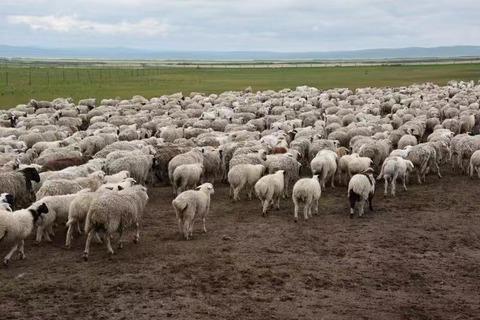当前位置:
X-MOL 学术
›
Funct. Ecol.
›
论文详情
Our official English website, www.x-mol.net, welcomes your
feedback! (Note: you will need to create a separate account there.)
Livestock overgrazing disrupts the positive associations between soil biodiversity and nitrogen availability
Functional Ecology ( IF 4.6 ) Pub Date : 2020-04-29 , DOI: 10.1111/1365-2435.13575 Ling Wang 1 , Manuel Delgado‐Baquerizo 2, 3 , Xuan Zhao 1 , Minna Zhang 1 , Yueqing Song 1 , Jinting Cai 1 , Qing Chang 1 , Zhiqiang Li 1 , Ying Chen 1 , Jushan Liu 1 , Hui Zhu 1 , Deli Wang 1 , Guodong Han 4 , Cunzhu Liang 5 , Chengjie Wang 4 , Xiaoping Xin 6
更新日期:2020-04-29
Functional Ecology ( IF 4.6 ) Pub Date : 2020-04-29 , DOI: 10.1111/1365-2435.13575 Ling Wang 1 , Manuel Delgado‐Baquerizo 2, 3 , Xuan Zhao 1 , Minna Zhang 1 , Yueqing Song 1 , Jinting Cai 1 , Qing Chang 1 , Zhiqiang Li 1 , Ying Chen 1 , Jushan Liu 1 , Hui Zhu 1 , Deli Wang 1 , Guodong Han 4 , Cunzhu Liang 5 , Chengjie Wang 4 , Xiaoping Xin 6
Affiliation

|
- Livestock overgrazing influences both microbial communities and nutrient cycling in terrestrial ecosystems. However, the role of overgrazing in regulating the relationship between soil biodiversity and nitrogen availability remains largely unexplored.
- We performed long‐term grazing exclusion experiments across eight sites along precipitation gradient covering three major types of grassland in northern China to compare the linkage between soil microbial diversity and N availability in overgrazed versus non‐grazed conditions.
- We found a significantly positive association between fungal diversity and soil available N in non‐grazed grasslands. However, the positive association was absent in overgrazed environments. Bacterial diversity is not related to soil available N in either non‐grazed or overgrazed grasslands. Moreover, in bacterial community, we found a positive link between the relative abundance of Actinobacteria with soil available N in non‐grazed, but not overgrazed, grasslands. Instead we found the links between relative abundance of Bacteroidetes and Acidobacteria with soil available N in overgrazed grasslands, but not non‐grazed, grasslands.
- Synthesis. Our work provides evidence that the relationships between microbial diversity and ecosystem functions are context‐dependent, and so microbial community diversity is likely not the major driver of soil N mineralization in overgrazed grasslands. Our study suggests that high intensity anthropogenic activities in grasslands restrains the capacity of diverse soil microbial communities to sustain ecosystem function, and more broadly the capacity of entire ecosystems to maintain important ecosystem processes such as plant production. Our study also indicates that the fundamental microbial communities associated with N availability change with differing land management strategies (e.g. livestock grazing).











































 京公网安备 11010802027423号
京公网安备 11010802027423号